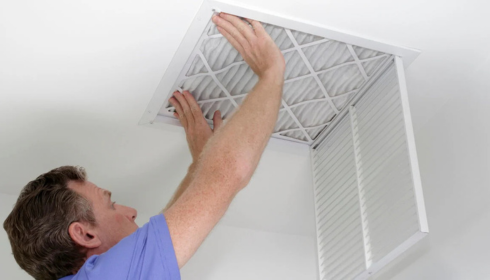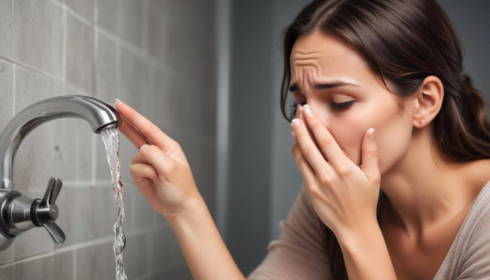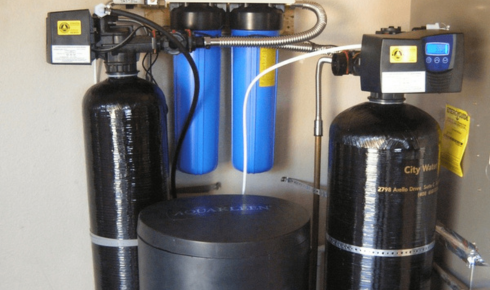Let’s face it—there’s a long list of things you’d probably rather do than change an air filter. It’s one of those quiet, behind-the-scenes tasks that gets shoved aside between grocery runs and dentist appointments. But here’s the truth nobody really talks about: that small rectangle hiding in your HVAC system? It’s doing a heck of a lot more than you think.
It’s not just trapping dust. It’s protecting your health. Keeping your system alive. Saving you money. Yeah, that dusty filter you forgot about could be holding back clean air and pushing forward higher energy bills.
So, if you’ve been ignoring it, now’s a good time to lean in. This isn’t just about routine maintenance. It’s about breathing easier—literally and financially.
The Often-Forgotten Hero of Your HVAC System
We all tend to give attention to the “big ticket” stuff—furnaces, AC units, ductwork. But what about the humble air filter?
Here’s the thing: your filter is the gatekeeper of air quality inside your home. Every time your system runs, it pulls in air, pushes it through the filter, and redistributes it through your vents. Ideally, what comes out is clean, breathable air.
But when the filter’s clogged with dust, pet dander, mold spores, pollen, and other airborne “ick,” you’re not just recirculating dirty air—you’re forcing your HVAC system to work double-time. That means more wear, higher bills, and yes, a higher chance of breakdowns.
Real Talk: When’s the Last Time You Changed Yours?
Most people couldn’t say off the top of their head. That’s not a judgment—just reality. Life gets busy. Filters aren’t exactly top-of-mind.
But if it’s been more than a few months, or you don’t even remember when it last happened, chances are it’s time.
If you’ve got pets, allergies, smoke indoors, or live in a dusty area? You’ll probably want to change it more often—every 30 to 60 days. For others, 90 days might be fine. But once you hit the 6-month mark? Yeah, that filter’s probably just sitting there like a sponge full of regret.
Learning how to change air filter home systems isn’t rocket science, either. It’s usually as simple as removing the old filter, sliding in a new one with the arrows pointing in the right direction, and closing the access panel. That’s it. Five minutes of effort for months of better air.
The Hidden Costs of a Dirty Filter
Think of it this way: a clogged filter is like breathing through a straw filled with cotton. It forces your system to suck in air harder, which strains the blower motor and increases energy use.
You might not notice it immediately, but over time, you’ll feel it—in your power bill, in reduced airflow, and possibly in costly repairs.
In fact, a dirty air filter is one of the top causes of HVAC system failure. And replacing a blower motor or a compressor? That’ll cost you way more than a $15 filter.
Oh, and let’s not forget: poor airflow = less comfort. Rooms that used to cool or heat quickly might now feel uneven. It’s subtle at first. But it adds up.
Allergies, Dust, and the Air You Breathe
Ever wonder why your allergies are worse inside the house than out? Or why there’s a layer of dust no matter how often you clean?
Your filter might be to blame.
A fresh filter catches airborne allergens before they settle on your surfaces—or in your lungs. It helps reduce sneezing fits, eye irritation, and those never-ending sniffles. It also helps asthma sufferers by keeping airborne triggers out of circulation.
For families with kids, elderly parents, or anyone with compromised respiratory health, a good filter isn’t just helpful—it’s essential.
MERV Ratings and What They Actually Mean
You might’ve noticed that filters come with something called a MERV rating (Minimum Efficiency Reporting Value). It’s basically a scale from 1 to 16 that tells you how well a filter traps tiny particles.
- MERV 1–4: Basic dust bunnies and lint
- MERV 5–8: Pollen, mold spores, dust mites
- MERV 9–12: Fine dust, smoke, pet dander
- MERV 13–16: Bacteria, virus carriers, all the microscopic stuff
Most homes do well with MERV 8 or 11. But if someone in your house has allergies, or you live near wildfires or pollution? A higher MERV could be worth it.
Just keep in mind: higher isn’t always better. Super-dense filters can restrict airflow in systems not designed for them. Always check your HVAC manual or ask a pro before upgrading.
Setting a Reminder Can Save You Hundreds
Here’s a little hack: set a recurring reminder on your phone for every 2–3 months. Add it to your wall calendar. Write it on a sticky note stuck to your thermostat.
Better yet, buy a year’s worth of filters at once and keep them in a closet. That way, when the reminder dings, you’re ready to swap and go for return panel.
It sounds small, but that tiny act can save you from breakdowns, boost efficiency, and even extend your HVAC’s lifespan.
Eco-Friendly Bonus: Cleaner Filters = Cleaner Planet
Using your HVAC system efficiently doesn’t just help your wallet. It helps reduce your home’s overall energy consumption, which is a win for the environment too.
When your system isn’t overworking to push air through a dirty filter, it consumes less electricity. Less strain means less energy—and less pollution. So, in a way, every clean filter is a step toward a cleaner planet.
And if you’re looking for extra credit? Recycle your old filters responsibly when possible. Some areas have programs for it, or you can check with local hardware stores.
Wrapping It Up: It’s Not Just Maintenance, It’s Self-Care
Yeah, it sounds cheesy. But taking care of your HVAC filter is one of those little acts of self-care that adds up over time. Kind of like flossing. Or stretching before bed. It doesn’t take much time. It doesn’t cost much. But the benefits? They’re absolutely worth it.



